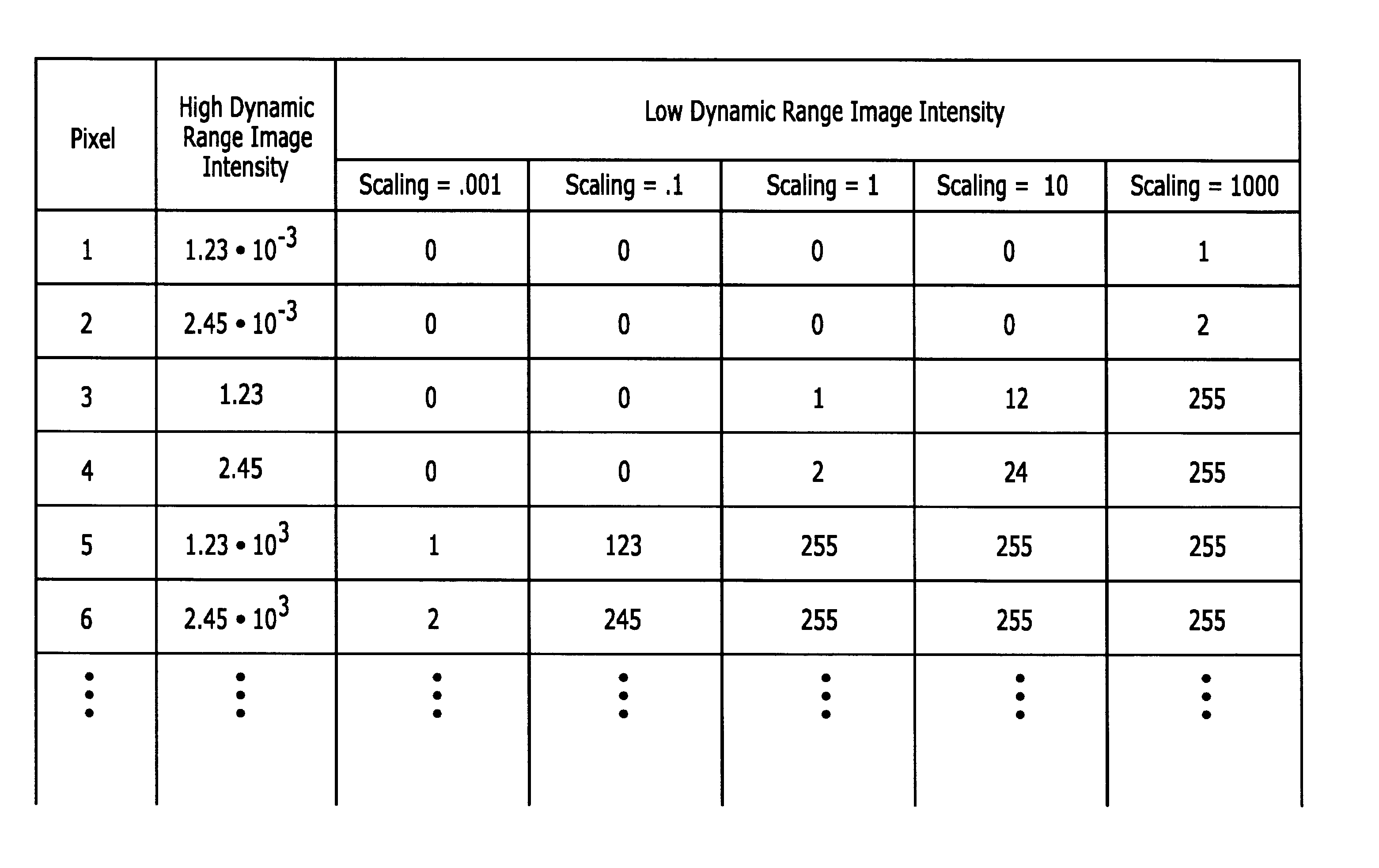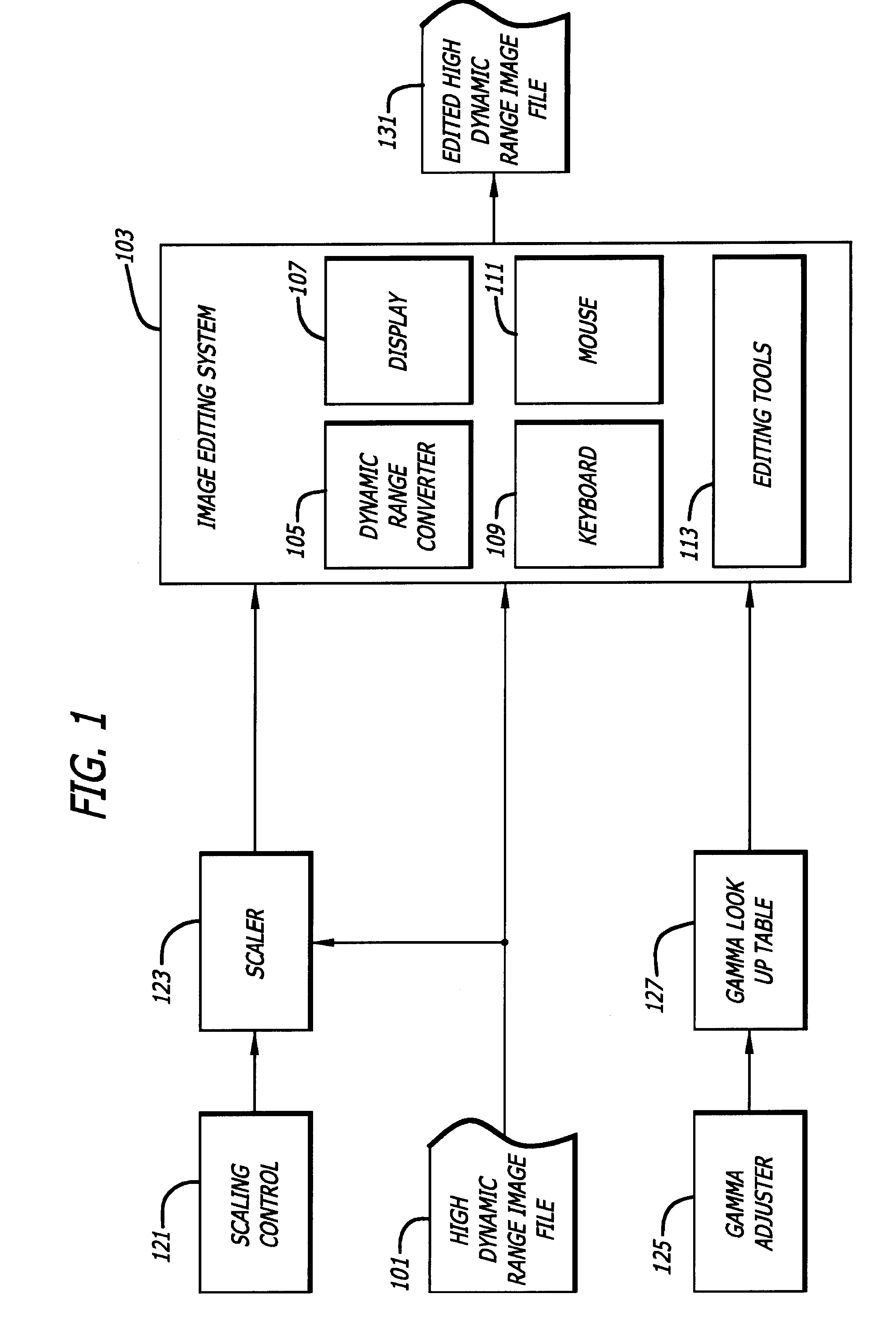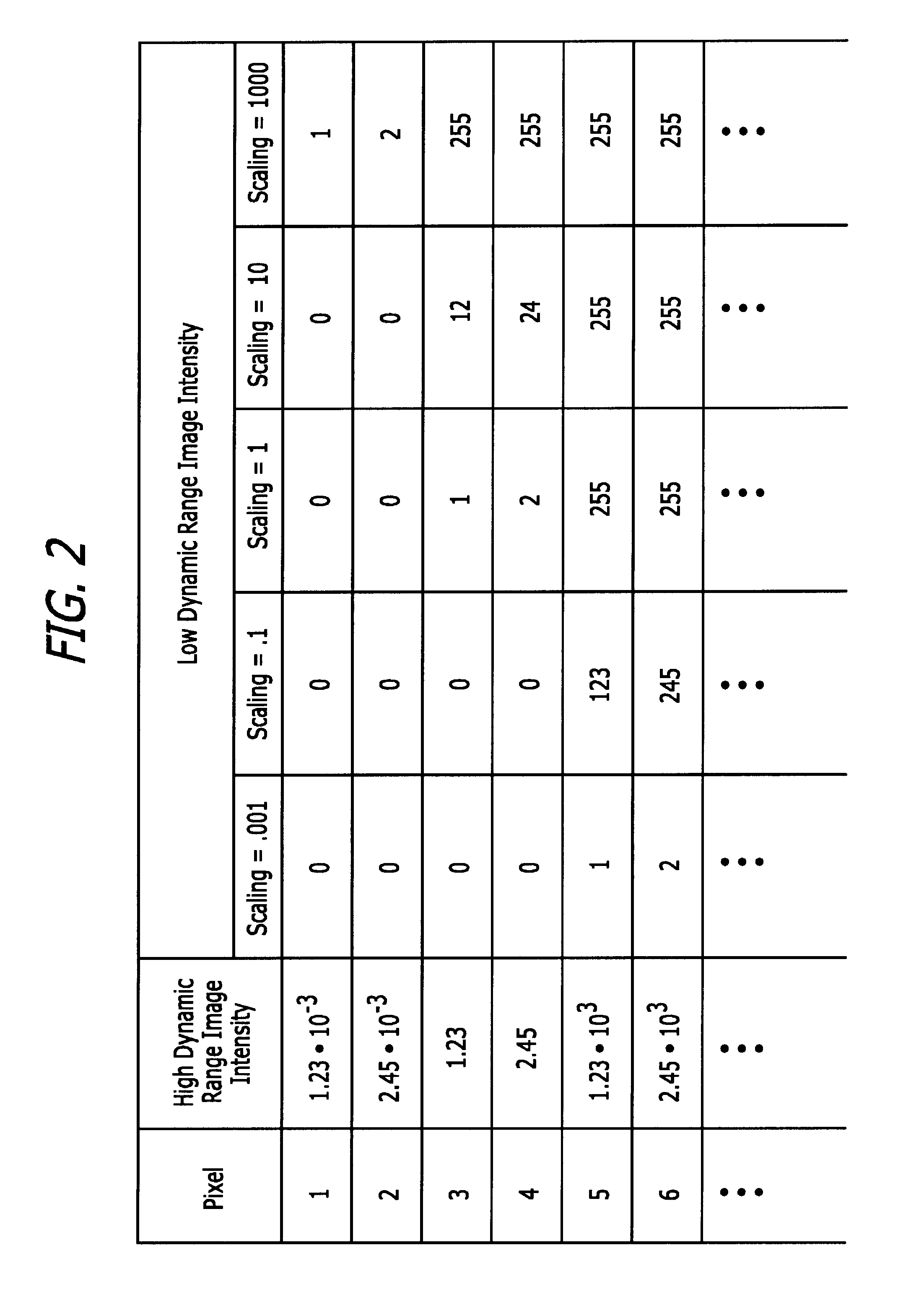High dynamic range image editing
a high-dynamic range, image editing technology, applied in image enhancement, electronic editing, digitised analogue information signals, etc., can solve the problems of affecting the conversion process, and affecting the quality of images, etc., to achieve the effect of not reducing the range of light intensity levels
- Summary
- Abstract
- Description
- Claims
- Application Information
AI Technical Summary
Benefits of technology
Problems solved by technology
Method used
Image
Examples
Embodiment Construction
[0033]FIG. 1 illustrates certain components of one embodiment of the invention.
[0034]As shown in FIG. 1, a high dynamic range image file 101 is processed by an image editing system 103. The image editing system 103 includes a dynamic range converter 105, a display 107, a keyboard 109, a mouse 111 and image editing tools 113.
[0035]A user-operable scaling control 121 is in communication with a scaler 123 which, in turn, is in communication with the image file 101 and the image editing system 103. A gamma adjuster 125 is in communication with a gamma lookup table 127 that is in communication with the image editing system 103.
[0036]The image editing system 103 is intended to represent any of the image editing systems that are now known or hereinafter created. At least some aspect of the image editing system 103 will typically be limited to a dynamic range that is less than the dynamic range of the image file 101.
[0037]The “dynamic range” of an image is the contrast ratio between its bri...
PUM
| Property | Measurement | Unit |
|---|---|---|
| light intensity | aaaaa | aaaaa |
| area | aaaaa | aaaaa |
| color | aaaaa | aaaaa |
Abstract
Description
Claims
Application Information
 Login to View More
Login to View More - R&D
- Intellectual Property
- Life Sciences
- Materials
- Tech Scout
- Unparalleled Data Quality
- Higher Quality Content
- 60% Fewer Hallucinations
Browse by: Latest US Patents, China's latest patents, Technical Efficacy Thesaurus, Application Domain, Technology Topic, Popular Technical Reports.
© 2025 PatSnap. All rights reserved.Legal|Privacy policy|Modern Slavery Act Transparency Statement|Sitemap|About US| Contact US: help@patsnap.com



